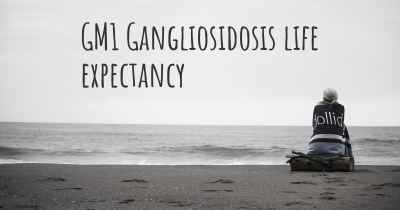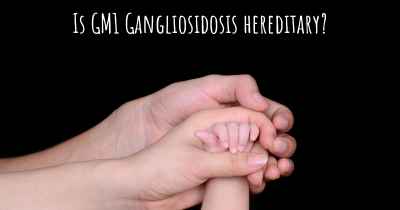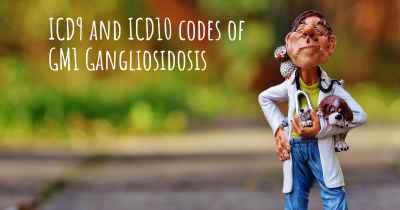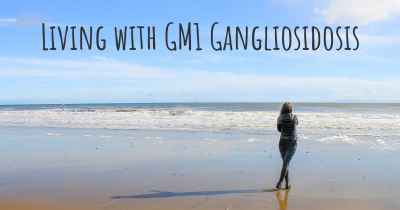Which advice would you give to someone who has just been diagnosed with GM1 Gangliosidosis?
See some advice from people with experience in GM1 Gangliosidosis to people who have just been diagnosed with GM1 Gangliosidosis
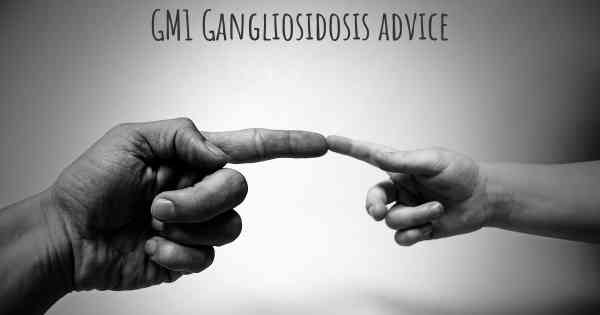
Advice for Someone Diagnosed with GM1 Gangliosidosis
Receiving a diagnosis of GM1 Gangliosidosis can be overwhelming and distressing. This rare genetic disorder affects the nervous system and can have significant impacts on an individual's health and quality of life. While there is currently no cure for GM1 Gangliosidosis, there are several steps you can take to manage the condition and improve your overall well-being. Here is some advice to help you navigate this challenging journey:
1. Seek Expert Medical Care:
It is crucial to find a healthcare team experienced in treating GM1 Gangliosidosis. Specialists such as neurologists, geneticists, and metabolic disorder experts can provide you with the most up-to-date information and guidance. They will help you understand the disease progression, manage symptoms, and explore potential treatment options.
2. Educate Yourself:
Take the time to learn as much as you can about GM1 Gangliosidosis. Understanding the disease, its symptoms, and potential complications will empower you to make informed decisions about your care. Reliable sources such as medical journals, reputable websites, and patient support organizations can provide valuable information and resources.
3. Connect with Support Networks:
Reach out to organizations and support groups that specialize in GM1 Gangliosidosis. Connecting with other individuals and families affected by the condition can provide emotional support, practical advice, and a sense of community. These networks can also help you stay updated on the latest research and treatment advancements.
4. Develop a Comprehensive Care Plan:
Work closely with your healthcare team to develop a personalized care plan that addresses your specific needs. This plan may include regular check-ups, symptom management strategies, physical and occupational therapy, and nutritional support. A comprehensive care plan will help optimize your quality of life and minimize potential complications.
5. Prioritize Symptom Management:
GM1 Gangliosidosis can cause a range of symptoms, including developmental delays, muscle weakness, seizures, and impaired motor skills. Collaborate with your healthcare team to identify and manage these symptoms effectively. Physical and occupational therapy, assistive devices, and medications may be recommended to alleviate discomfort and enhance your functional abilities.
6. Consider Genetic Counseling:
If you are planning to have children or have family members who may be carriers of GM1 Gangliosidosis, genetic counseling can provide valuable insights. A genetic counselor can explain the inheritance patterns, discuss reproductive options, and help you make informed decisions about family planning.
7. Stay Engaged in Research:
Stay informed about ongoing research and clinical trials related to GM1 Gangliosidosis. New treatments and therapies are continually being explored, and participating in clinical trials may offer potential benefits. Discuss these options with your healthcare team to determine if they are suitable for you.
8. Take Care of Your Emotional Well-being:
A diagnosis of GM1 Gangliosidosis can be emotionally challenging for both the individual and their loved ones. It is essential to prioritize your mental health and seek support when needed. Consider counseling, therapy, or joining support groups to help cope with the emotional impact of the condition.
9. Engage in a Healthy Lifestyle:
While there is no cure for GM1 Gangliosidosis, maintaining a healthy lifestyle can contribute to your overall well-being. Focus on a balanced diet, regular exercise within your abilities, and sufficient rest. Additionally, ensure you have a strong support system of family and friends who can provide assistance and encouragement.
10. Stay Positive and Hopeful:
Living with GM1 Gangliosidosis can be challenging, but maintaining a positive mindset and staying hopeful is crucial. Celebrate small victories, focus on what you can control, and cherish meaningful moments with your loved ones. Advances in medical research and treatment options continue to evolve, offering hope for the future.
Remember, you are not alone in this journey. Surround yourself with a supportive healthcare team, connect with others facing similar challenges, and take proactive steps to manage your condition. By staying informed, seeking appropriate care, and prioritizing your well-being, you can navigate the complexities of GM1 Gangliosidosis with resilience and hope.
